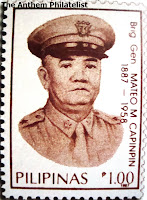The National Anthem of Ireland

The text of Amhrán na bhFiann, ( The Soldier's Song) consisting of three stanzas and a chorus, was written in 1907. It was first published in the newspaper, Irish Freedom in 1912. The chorus solely was formally adopted as the National Anthem in 1926, displacing the earlier Fenian anthem, God Save Ireland, used on an unofficial basis. A section of the National Anthem (consisting of the first four bars followed by the last five) is also the Presidential Salute.
There is currently a movement in Ireland to replace the anthem, due to its militant nature and anti-British tone. Also, some have argued that the melody is difficult to play, whereas others have pointed out that the whole song has been performed, instead of the chorus (which is the official anthem), or has been played at the wrong speed, both of which have happened at recent Olympic Games.
An anthem composed by Phillip Coulter called "Irelands Call" is used as a non-sectarian anthem, which is used by both northern and southern Irish athletes when competing together as a unified team.
Patrick "Paddy" Heeney (October 19, 1881 – June 1911) was an Irish composer whose most famous work is the music to the Irish national anthem "Amhrán na bhFiann" (The S oldier's Song). Heeney was born in Dublin. The Soldier's Song is generally believed to have been composed in 1907, though, in later years, the lyricist Peadar Kearney put the date at 1909 or 1910. The English lyrics were the work of Kearney who was a prominent member of the Irish Republican Brotherhood and had been Heeney's musical collaborator since 1903. The unusual metre of Kearney's lyrics to The Soldier's Song initially gave Heeney considerable trouble in his attempt to fit music to them. Other collaborations between Heeney and Kearney include Michael Dwyer.
oldier's Song). Heeney was born in Dublin. The Soldier's Song is generally believed to have been composed in 1907, though, in later years, the lyricist Peadar Kearney put the date at 1909 or 1910. The English lyrics were the work of Kearney who was a prominent member of the Irish Republican Brotherhood and had been Heeney's musical collaborator since 1903. The unusual metre of Kearney's lyrics to The Soldier's Song initially gave Heeney considerable trouble in his attempt to fit music to them. Other collaborations between Heeney and Kearney include Michael Dwyer.
 oldier's Song). Heeney was born in Dublin. The Soldier's Song is generally believed to have been composed in 1907, though, in later years, the lyricist Peadar Kearney put the date at 1909 or 1910. The English lyrics were the work of Kearney who was a prominent member of the Irish Republican Brotherhood and had been Heeney's musical collaborator since 1903. The unusual metre of Kearney's lyrics to The Soldier's Song initially gave Heeney considerable trouble in his attempt to fit music to them. Other collaborations between Heeney and Kearney include Michael Dwyer.
oldier's Song). Heeney was born in Dublin. The Soldier's Song is generally believed to have been composed in 1907, though, in later years, the lyricist Peadar Kearney put the date at 1909 or 1910. The English lyrics were the work of Kearney who was a prominent member of the Irish Republican Brotherhood and had been Heeney's musical collaborator since 1903. The unusual metre of Kearney's lyrics to The Soldier's Song initially gave Heeney considerable trouble in his attempt to fit music to them. Other collaborations between Heeney and Kearney include Michael Dwyer.Heeney died in poverty aged 29 in Jervis Street Hospital, Dublin . He was buried in an unmarked grave in Drumcondra Cemetery, where a plaque on the wall now commemorates him. Peadar Kearney was in London with the Abbey Company at the time of Heeney's death. He took up a collection for his deceased friend’s mother.
Peadar Kearney (12 December 1883 – 24 November 1942) was an Irish republican and composer of numerous rebel songs. In 1907 he wrote the lyrics to "The Soldier's Song" ("Amhrán na bhFiann"), now the Irish national anthem.
Kearney was born at 68 Lower Dorset Street, Dublin in 1883. His father was from Louth and his mother was originally from Meath. He was educated at the Model School, Schoolhouse Lane and St Joseph's Christian Brothers School in Marino, Dublin. He left school at the age of 14, becoming an apprentice house painter.
Kearney's songs were highly popular with the Volunteers (which later became the IRA) in the 1913-22 period. Most popular was "The Soldier's Song". Kearney penned the original English lyrics in 1907 and his friend and musical collaborator Patrick Heeney composed the music. The lyrics were published in 1912 and the music in 1916. In 1926, four years after the formation of the Free State, the Irish translation, "Amhrán na bhFiann", was adopted as the national anthem, replacing God Save Ireland. Kearney was not paid royalties for his contribution to the song. Other well-known songs by Kearney include "Down by the Glenside (The Bold Fenian Men)", "The Tri-coloured Ribbon", "Down by the Liffey Side" and "Erin Go Bragh" (Erin Go Bragh was the text on the Irish national flag before the adoption of the tricolour).
The stamp above issued in 2007 by Ireland features children singing the National Anthem. A part of the anthem score is seen. Below is the first day cover with score partially shown.






